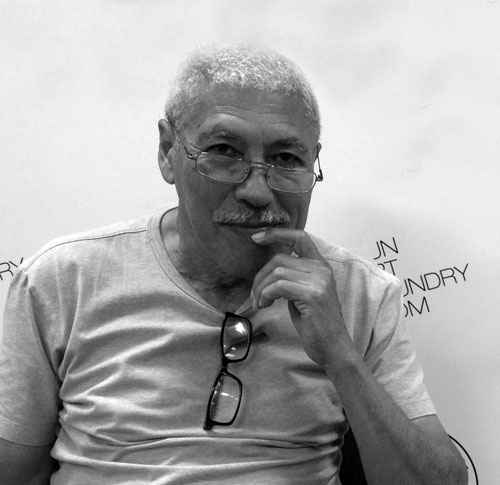Pedro Pablo Oliva
By Leonora Oliva
When Pedro Pablo Oliva was announced as winner of the National Prize in Visual Arts[1] in 2006 no one was surprised. As stated by David Mateo, this was “a prize of public consensus”. And it so because Oliva’s work is, undoubtedly, one of the greatest examples of visual arts in the Island. The far-reaching distinction did not entail the establishment – already ensured many years ago by said “public consensus” – but merely a confirmation of the substantial contribution made by this creator with his work and his preeminent place in the history of Cuban art.
Pedro Pablo Oliva’s work has been signed by the spirit of the so-called “generation of true hope”, the one that flooded the Cuban artistic field during the afflicted decade of the 1970s, mainly molded – artistically and ideologically – in the late 1960s in the classrooms and workshops of the National School of Arts of Cubanacán, first of its kind founded by the still young Cuban Revolution. Said academic training, the staff members and an improbable mixture of nostalgia and utopian projection (in addition to which a certain sense of urgency exhorted to retake and concretize the search of a national idiosyncratic expression) ended by approaching many of these artists, in their form and spirit, to the project of the first Cuban modernity. Those were years of bursting lyricism and utopian idealism disguised as realism, concretized in works that praised rural life, the anonymous faces of the people and the epic of the daily individual, symbolically validated by the revolutionary power. This imagery and its tradition were then flaunted and defended as key identifying elements in the expression of the “Cuban essential”·.
Oliva succeeds in summarizing the spiritual commotion of a convulse Cuba with images that are anagrams of daily life. His artistic proposal is born from the day-to-day, from the way in which the common man grasps the realities and circumstances that surround him. His is an anecdotic work, of local glance, and it is precisely this condition that reflects its universality. Pedro Pablo Oliva demands from the viewer the understanding of something more than the formal aspects of an image or the conceptual precepts of a creed or creative manifesto: he demands the search and understanding of a context, of a “different” scene that, in addition to being “exotic” in principle, shows unparalleled authenticity if compared with the rest of the planet, and is likewise filled with humanity.
The pieces that make up Rostros de una Isla (FACES OF AN ISLAND) correspond to the painter’s work from 2013 to date. This is a tiny selection of the Oliva’s plentiful artistic production, an artist who does not stop his creative activity one second. Despite having been diagnosed Parkinson’s disease in 2010, Pedro Pablo does not abandon his canvases or his cardboards: he is ever more obsessed by the control of the line, holding on to this act that defines him. Both sculptures and drawings exhibit the surreal of the Cuban scenario, with this artist’s paradigmatic style of sketching figures.
[1]Highest distinction granted by the National Council for Visual Arts in Cuba (CNAP, the Spanish acronym) to a Cuban artist living in the island, for the work of his lifetime.





